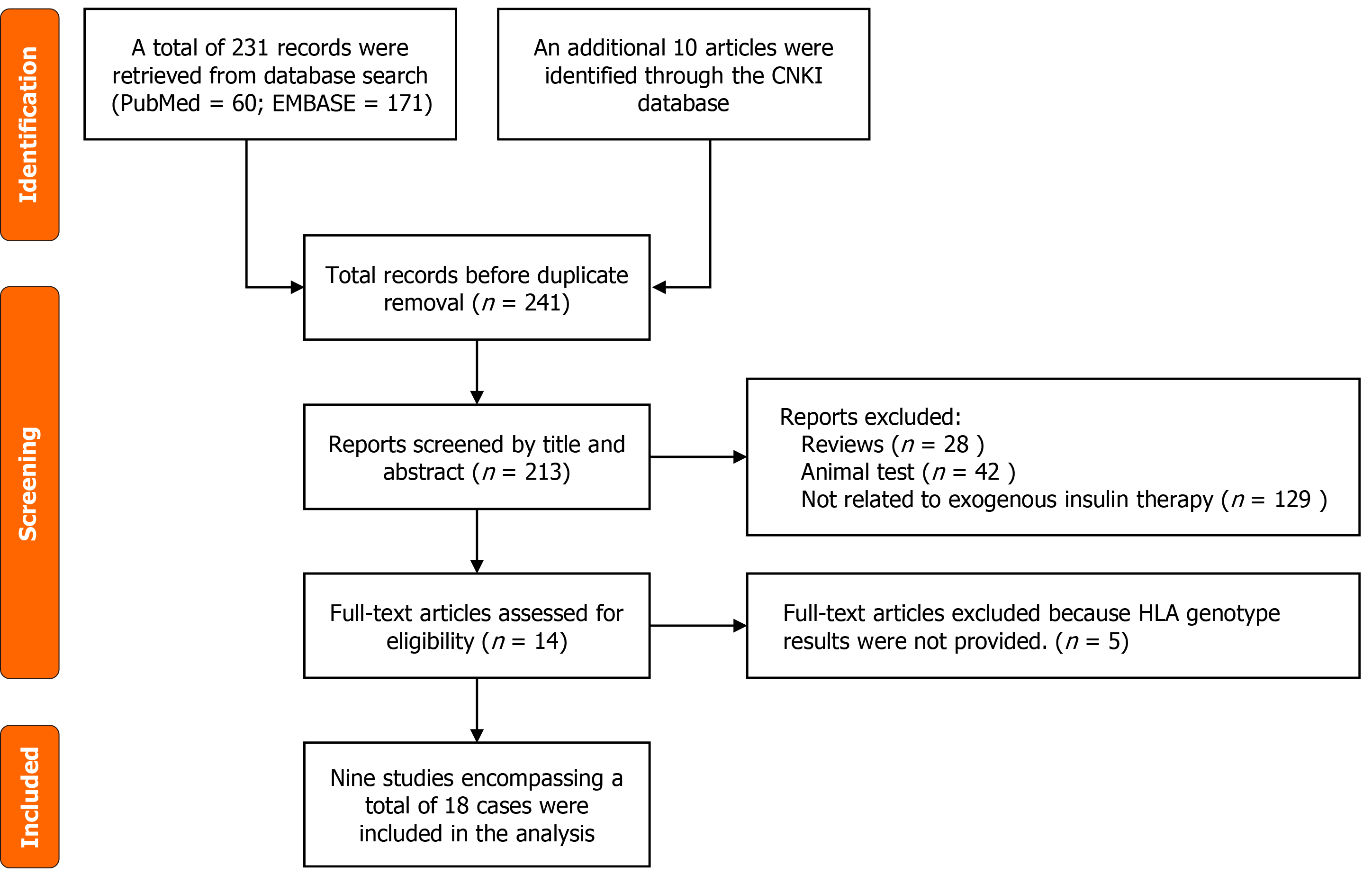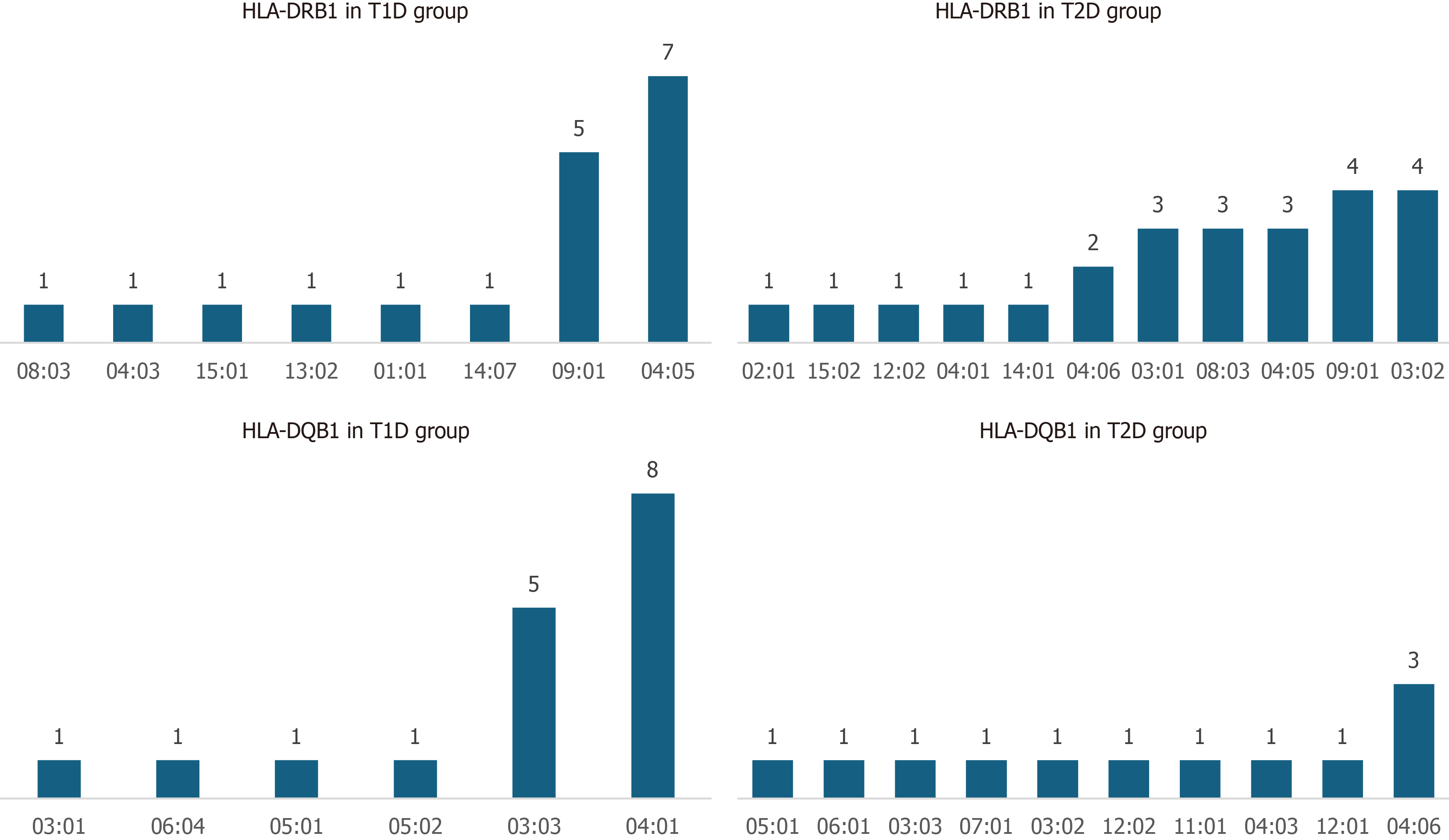Copyright
©The Author(s) 2025.
World J Diabetes. Sep 15, 2025; 16(9): 109130
Published online Sep 15, 2025. doi: 10.4239/wjd.v16.i9.109130
Published online Sep 15, 2025. doi: 10.4239/wjd.v16.i9.109130
Figure 1 Flowchart illustrating the process of study identification, screening, and inclusion in the analysis.
The diagram outlines the number of records identified, screened, excluded, and ultimately included based on predefined eligibility criteria. HLA: Human leukocyte antigen.
Figure 2 Distribution of human leukocyte antigen-DRB1 and human leukocyte antigen-DQB1 alleles in the type 2 diabetes→ type 1 diabetes and type 2 diabetes→ type 1 diabetes groups.
The upper panels display high-risk human leukocyte antigen (HLA)-DRB1 allele frequencies in each group, while the lower panels show HLA-DQB1 distributions. In the type 2 diabetes (T2D)→type 1 diabetes (T1D) group, DRB104:05 and DRB109:01, as well as DQB104:01 and DQB103:03, were predominant, consistent with classical T1D susceptibility haplotypes. In contrast, the T2D→T2D group exhibited a broader and more heterogeneous distribution of both DRB1 and DQB1 alleles, with no dominant autoimmune-associated patterns. T1D: Type 1 diabetes; T2D: Type 2 diabetes; HLA: Human leukocyte antigen.
- Citation: Li XG, Qi MY, Li X, Ping F. Exogenous insulin-associated autoimmunity and the emergence of double diabetes in type 2 diabetes. World J Diabetes 2025; 16(9): 109130
- URL: https://www.wjgnet.com/1948-9358/full/v16/i9/109130.htm
- DOI: https://dx.doi.org/10.4239/wjd.v16.i9.109130














